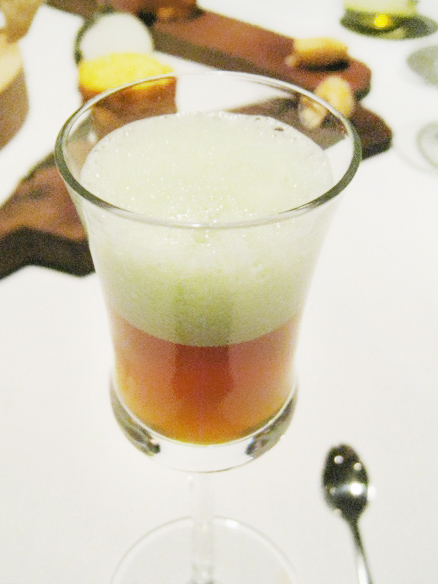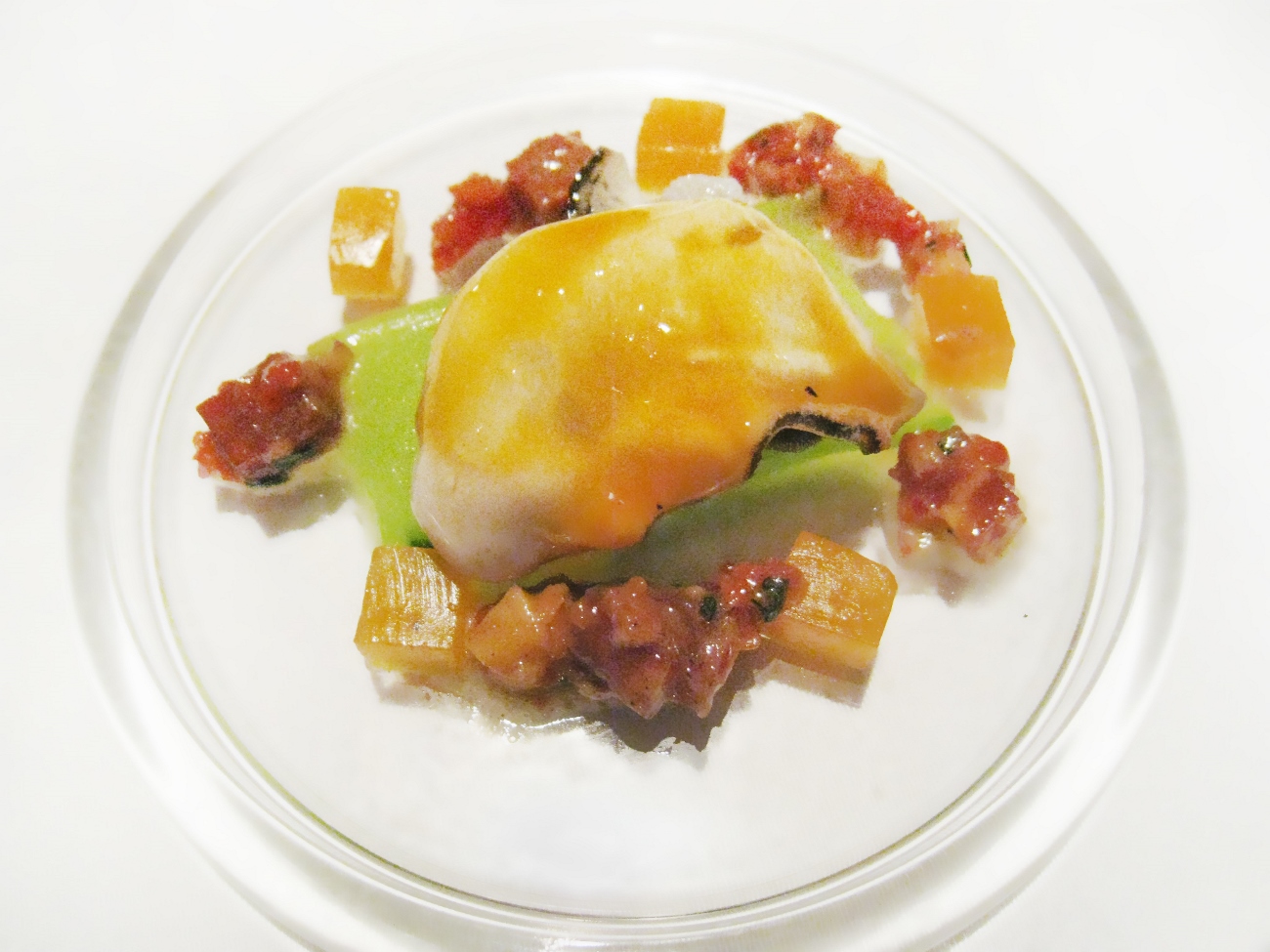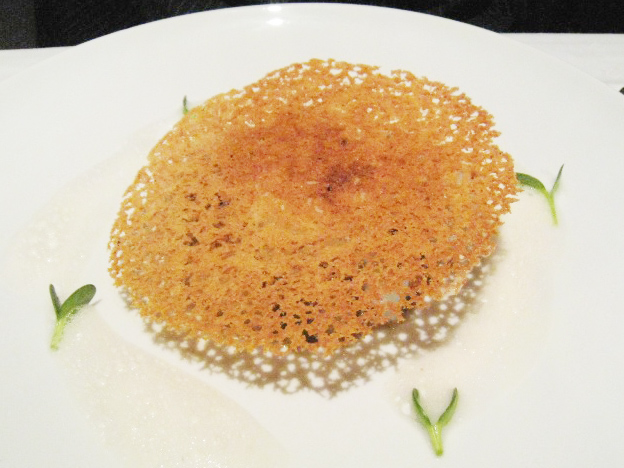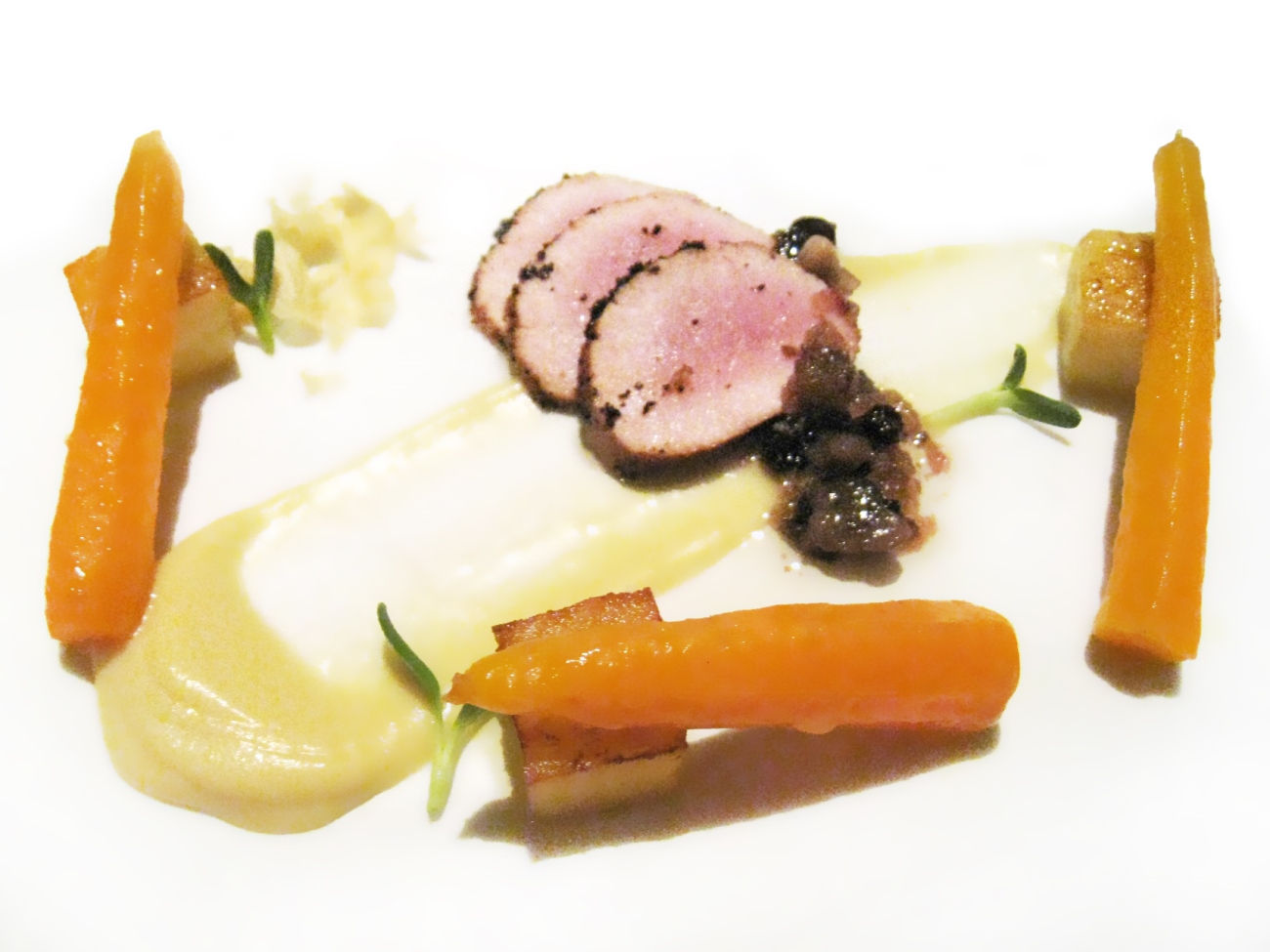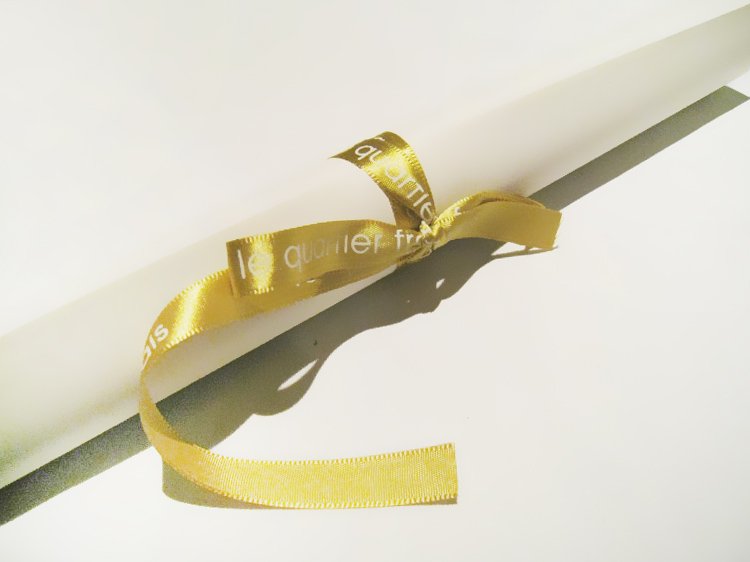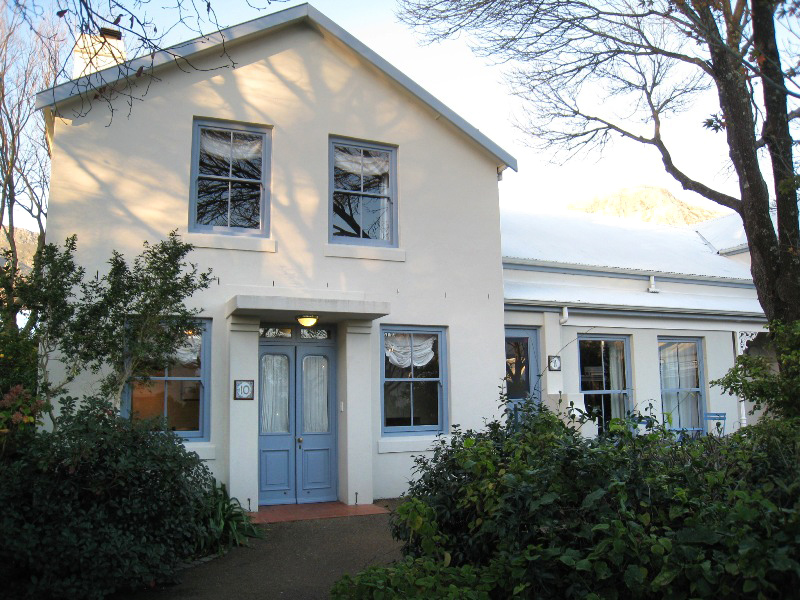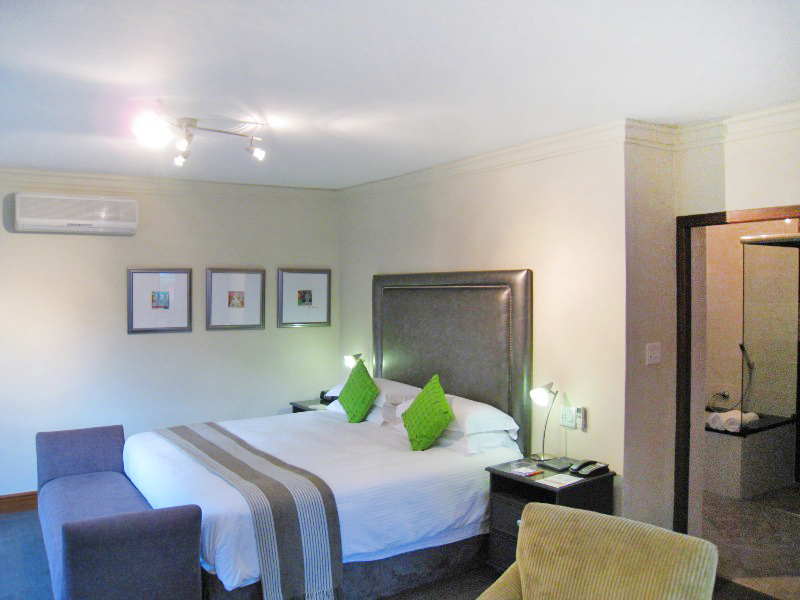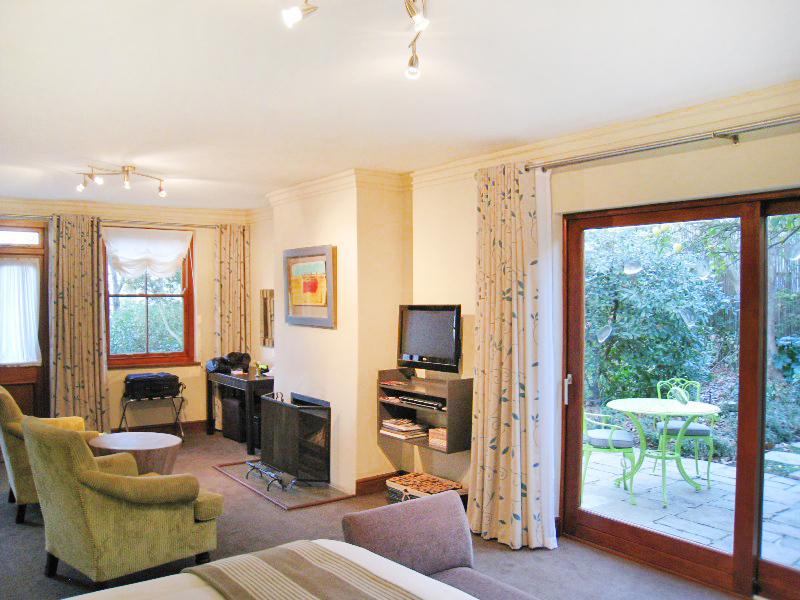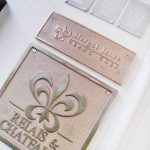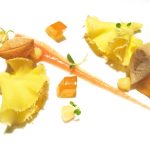CLICK ON THE MAIN PHOTO ABOVE TO VIEW CAPTIONS IN GALLERY FORMAT
Image 1: The magnificent valley of Franschhoek (“French corner”) is about 75 Km from Cape Town and was originally settled by the French in the 17th century. Over time, the region became a sleepy country retreat, well off the beaten track, but it began experiencing a boom in the early 1990s, and is now one of South Africa’s most sought-after residential areas.
Image 2: Le Quartier Français was founded by Susan Huxter when Franschhoek was just an isolated and little-known town. Today, it’s a 21-room boutique hotel and a world famous culinary destination. The transformation began in…
Image 3: …1995, when Chef Margot Janse, who was born and educated in The Netherlands, joined the kitchen team. Within a decade the restaurant had become what it is today - what an amazing journey!
Image 4: This is the entrance to the hotel. The red room on the right is their casual dining area, the Living Room, and the white room on the left is the famous Tasting Room.
Image 6: As usual, we were way too early for dinner, so we decided to check in first, as we were staying overnight.
Image 7: The rooms were spacious and…
Image 8: …comfortable, and we even had…
Image 9: … our own garden area for a spot of relaxation before our innovative South African meal!
Image 10: The exterior of the Tasting Room.
Image 11: We had a quick peek at the wine cellar.
Image 12: As we had time to spare, we kicked off our evening with a pre-prandial drink in the Living Room. Susan was extremely friendly and making an effort to meet every guest – you could just feel the energy of her personality! Chef Margot also emerged from her busy kitchen to chat with a few diners before disappearing again to start her hectic routine.
Image 13: We learned that, in fact, Margot had been in the kitchen since noon that day - even though the restaurant opens only for dinner. And she was still there when we left, sometime after midnight! She joked (at least, we hope it was a joke!) that she doesn't have much time for anything else except work in the kitchen.
Image 14: The Tasting Room has no menu: a meal here is a series of surprises to diners. However, you know one thing in advance that Chef Margot tries to use as many indigenous ingredients as possible. This gives her a lot of flexibility because, as she was keen to emphasise, Africa produces an abundance of native foods, from vegetables to meat and fish.
Image 15: As she hurried back to the kitchen, the staff brought us this mix of crunchy pork crackling, apple crisp, and Fish & Chips made with a thin strip of hake and potato accompanied by a dip.
Image 16: This was followed by a rather interesting-looking brioche, served in a can with whipped brown butter. The warm sweetcorn bread was so delicious, I could have it every day if I could!
Image 17: One more surprise - wood sorrel foam on a porcini jelly. All these tastes, even before our first course! No wonder it’s called the "Tasting Room"! However, as I promised Susan that I would not to reveal all the courses in order to keep the surprise element in the menu, I’ll only reveal a selection of the dishes we had.
Image 18: What a magical way to present the first course! When the dish was uncovered (SEE VIDEO HERE!), our table was suddenly enveloped in a small cloud from this lightly smoked oyster, resting on a slice of cucumber and surrounded by cubes of passion fruit jelly and chorizo. This oyster came from Algoa Bay, on the country’s Southern coast.
Image 19: What a combination: the taste of the ocean from the oyster; the fruitiness of the jelly; the amazing crunchy freshness of the sous-vide cucumber… it was a perfect course. Well, almost perfect - the chorizo was perhaps a bit too powerful for the delicately elegant flavours of the other ingredients.
Image 20: Highlands, in the Kingdom of Lesotho (a small, landlocked country within South Africa), is a famous for its fishing, due to its high altitude and cold water. This trout, decorated with squid ink and a touch of wasabi cream, was from this area. From the soft and moist texture, it was obvious that this fish was carefully cooked.
Image 21: Now then….what’s hidden underneath the bread wafer on this cute-looking plate?
Image 22: It turned out to be a slow-cooked egg delicately resting on a bed of slippery jack mushroom. This mushroom, definitely one of the highlights of the meal, had a fatty, meat-like texture with an intense earthiness. It’s also called South African porcini. And it was amazing! So far, I was incredibly impressed with the quality of the ingredients this country had to offer!
Image 23: Terrine, layered with foie gras and prosciutto jelly, and served with a buttery brioche, whisky-soaked cranberries, and a quenelle of soft caramel. A beautiful course - the rich and creamy foie and the saltiness from the prosciutto nicely blended with the long sweet finish from the caramel. The quality of food from this kitchen continued to amaze! What’s more, the staff were helpful and knowledgeable, always willing to explain the source of ingredients. This foie gras, for example, came from Rustenburg, in South Africa’s North West.
Image 24: Before the next course, we were introduced to a native South African herb called Buchu - which was extremely powerful and aromatic! We were then shown a range of other herbs and spices unique to the country. It was certainly an enlightening meal - every course was an education!
Image 25: And now, on to the next course - Jerusalem artichoke and Buchu risotto, designed to showcase the delights of Buchu. Magnificent!
Image 26: Chef Margot loves to explore with innovative combinations, and this was a great example - slices of warthog loin, roasted in coffee and served with garlic purée, potato fondant and bone marrow. I have to confess that I had no idea what a warthog was until I recruited the help of the Internet! You probably already know, but in case you don’t, this…
Image 27: …is a Warthog. It’s an African wild pig, and it’s certainly a distinctive-looking animal!
Image 28: Considered to be the best cheese in the country, Dalewood Huguenot cheddar has a rich and sweetly nutty tone. It was served with tiny balls of Blue Gum honey, which has a mild, but distinctly flowery flavour.
Image 29: It was time for another lesson. The staff showed us this strange looking object, and explained that it was baobab, a nutritious African superfruit from a Madagascar tree. Apparently it contains more vitamin C than oranges, and more calcium than milk!
Image 30: Without further delay, we got to tasting it, in the form of this Baobab and pear parfait, with lemon verbena and verjuice foam. An excellent dessert indeed!
Image 31: Now the final course of the night - a unique-looking tube, made of sugar and accompanied by coconut sorbet and passion fruit coulis. Inside the fragile tube was cashew nut and savarin, plus some sponge cake soaked in rum. Our server then added a touch of…wait for it….curry sauce! How surprising is that! It was certainly a bold thing to do – but successful, as the pleasant hint of curry fragrance complemented the dish very well. Watch video.
Image 32: To finish, a selection of mignardises for our tea. Inspired by our recent education in South African herbs, we asked if our tea could be a Buchu infusion!
Image 33: This could so easily have been just another French meal if Chef Margot had simply flown in her main ingredients from other parts of the world. Throughout the past two decades, Chef Margot has made an effort to research and to use local ingredients as the inspiration for her menu. I was delighted to experience her skills – skills that truly showcase what Africa can offer to the culinary world, and I knew that this experience was just scratching the surface. I hope I’ll be back one day to continue my journey across Africa’s rich landscape of tastes.
